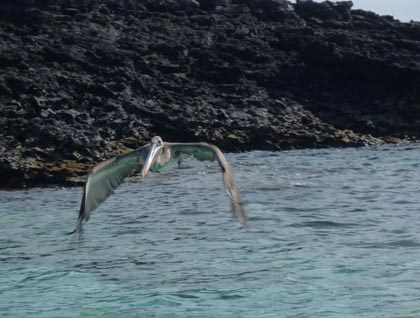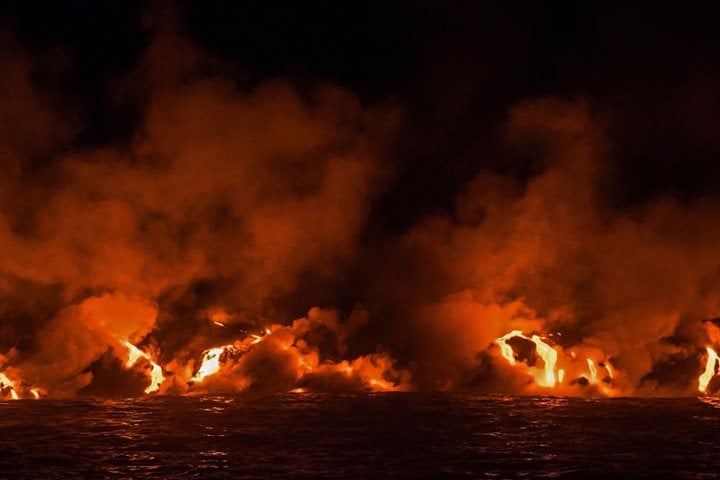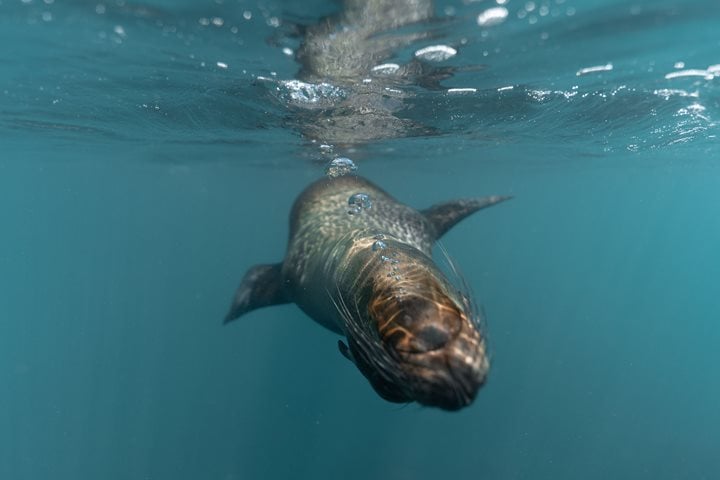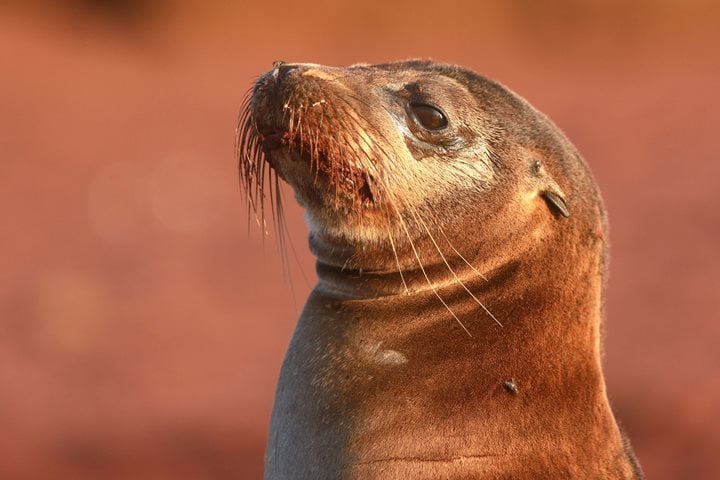Today during our morning and afternoon activities we enjoyed learning about how this impressive oceanic archipelago, 600 hundred nautical miles off the coast of South America, was formed.
Our first stop was Sombrero Chino Island and this small parasitic volcano is very close to Santiago Island, which is the main volcano in this area. Our first activity took place in a beautiful bay in between Sombrero Chino and Santiago Island. Once we boarded our Zodiacs, which are a very useful tool of exploration, we enjoyed closely inspecting a very interesting and dramatic geological formation.
Later we ventured out again, this time with snorkeling equipment, to explore the marine life of this area. It was such a perfect combination of activities to first see this location by land followed by sea exploration. During both outings we were entertained by penguins, making it a very special morning.
On our way towards Sullivan bay we passed by a small group of Islands known as Bainbridge islets. On one of them there is a caldera with brackish water and we observed flamingos feeding on microscopic crustaceans.
Once we dropped anchor at Sullivan bay we disembarked to explore lava flows from 1897. It’s a very prehistoric looking destination where the colonization of pioneer plants is just taking process. It was amazing to see lots of Galapagos doves feeding on an endemic Galapagos pectis plants. That is how Galapagos was formed, in a very slow process over many, many years.
No matter how close an Island is to another, each one has its one beauty and interesting qualities for our Galapagos explorers to discover.







